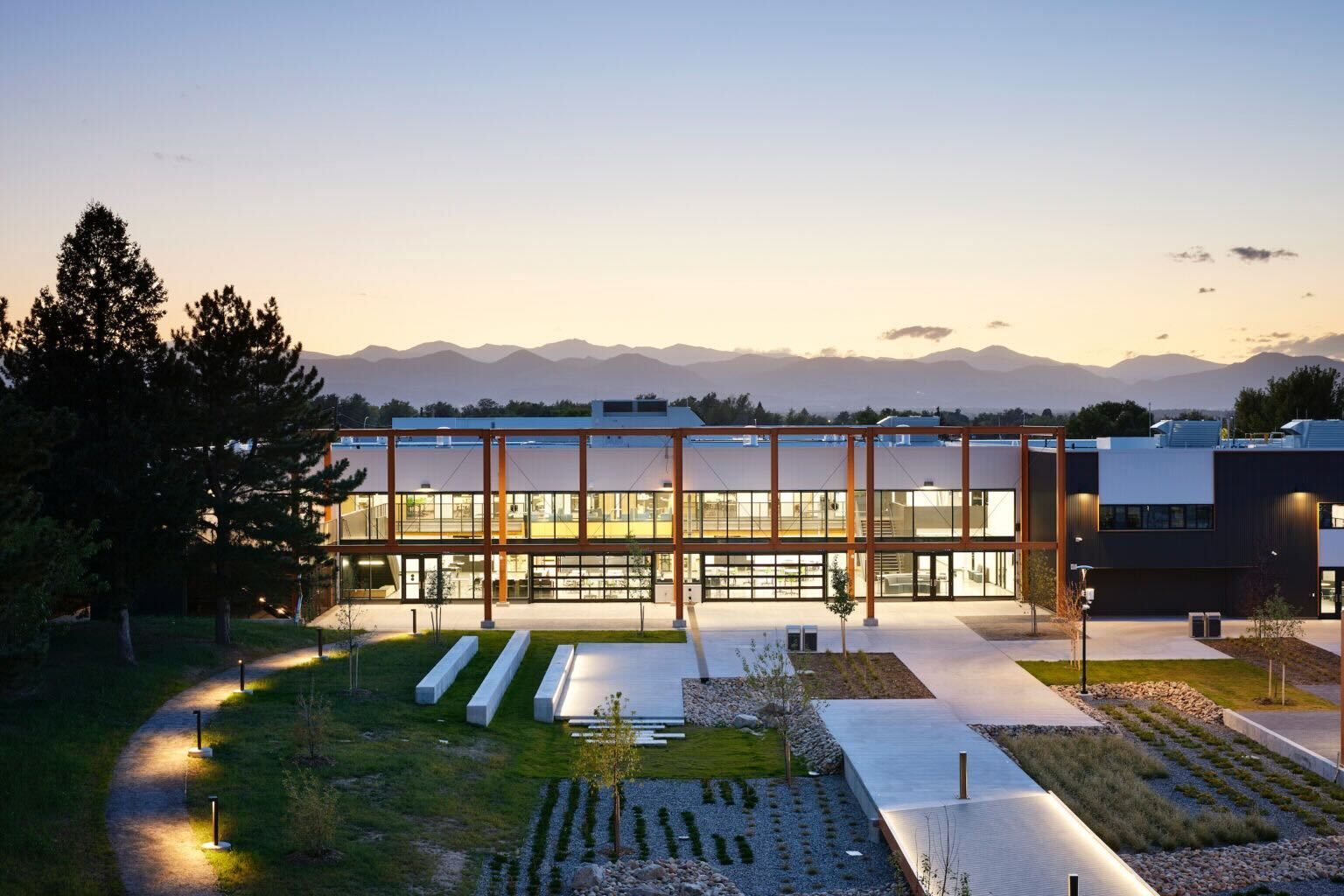By Jeff Mullikin, principal at AE Design

In an era characterized by rapid technological advancements, the significance of science, technology, engineering and math (STEM) education has never been more pronounced. Studies underscore the crucial role of early involvement in STEM courses, acting as a major link for students aiming to pursue these disciplines in higher education. As employment in STEM occupations has surged by 79% in the past three decades, the demand for well-equipped, innovative learning environments has become increasingly pressing.
The recent years have witnessed a growth in the recognition of the pivotal role that modern, purpose-built spaces play in shaping the future of STEM education. A 2018 report by Best Value Schools showcased the transformative impact of modern renovations to educational facilities on learning quality. What emerged from this research was a compelling trend — nearly half of the projects deemed most transformative were STEM facilities, occupying the top two spots. This emphasis on STEM infrastructure underscores the imperative role these facilities play in shaping the future of high-quality and innovative learning environments.
A hands-on approach to nurturing STEM talents
STEM education facilities are not merely classrooms; they are the spaces where collaboration, interdisciplinary work and innovative teaching and learning converge. According to the Center for Strategic and International Studies, the surge in attention to STEM education reflects a deep focus on the long-term competitiveness of the United States. With a global shift in STEM dominance, fostering a robust education system has become imperative for maintaining scientific and economic leadership.
As found by the Canadian Center of Science and Education, early engagement in STEM courses is critical, with high school serving as the connection for students pursuing these subjects in higher education. STEM education facilities must go beyond conventional teaching methods; they should expose students to various fields, fostering relationships with specific industries and encouraging meaningful interactions between students and teachers.
The ideal architectural design for STEM classrooms involves strategic choices to enhance the environment. To mirror real-world experiences, classrooms should be equipped with premium tools and technologies found in professional facilities. Flexibility is key, with adaptable labs supporting multidisciplinary work and open spaces for team collaboration. High-bay ceilings accommodate hands-on projects and open atriums and expansive windows showcase the work within. Details matter when creating an innovative STEM education facility that not only reflects the practical aspects of the field but nurtures creativity and communication among students.
The importance of lighting in education
In education, lighting goes beyond mere illumination to play a pivotal role in shaping the psychological development of children. Research indicates the significant impact of light on alertness, cognitive skills and stress hormone levels.
A strategy for ideal lighting involves incorporating natural daylight and views into every classroom and work area, seamlessly blending both daylight and electric lighting. The incorporation of electrical controls goes a step further to create an environment conducive to varied learning needs. Open designs, like floor-to-ceiling windows, infuse spaces with natural light to energize students, making the educational setting expansive and inviting.
Thoughtful lighting design improves health and learning outcomes and reduces energy consumption. It addresses evolving demands on educational environments, fostering productive school days and creating spaces that inspire curiosity and engagement.
The EPIC Campus in Littleton: A blueprint for success
Enter the Explorative Pathways for Innovative Careers (EPIC) Campus at Littleton Public Schools. EPIC is not just a facility — it’s a visionary hub that allows students to choose pathways such as aerospace, business and entrepreneurship, computer science, construction, future education, health sciences, natural resources and student support.
The new EPIC facility is the outcome of a fruitful collaboration between AE Design, Cunningham, FCI Constructors and Jacobs Engineering. The result is a modern, sustainable building that aligns with the demands of contemporary education. Students at EPIC experience hands-on learning using state-of-the-art technology and innovative processes. The facility offers students opportunities to earn content credit, industry certifications, concurrent enrollment and work-based learning, aligning with career prospects.
Just as lighting design influences health and learning, EPIC exemplifies the power of thoughtful STEM facility design to positively shape the educational journey. Local project partners, including AE Design, contributed to the sustainability of the facility by implementing LED lighting, smart controls, integrated solar power canopies and upgraded utilities. This approach to lighting and electrical design showcases the potential of facility design as a teaching tool.
Designing education facilities for future-proof learning
In a world where attention spans are dwindling and the demands on educational environments are evolving, thoughtful design has become paramount. A study revealed that 16% of the variation in learning development over a one-year period can be attributed to the physical design of the classroom. It’s about creating an environment that fosters curiosity, supports STEM curriculums and prepares students for the challenges of tomorrow.
The EPIC Campus not only stands as a beacon for STEM education but as a testament to the transformative power of well-designed spaces. As we reimagine the possibilities, the collaboration between designers and educators becomes the catalyst for transformative educational spaces that propel students toward success in the ever-evolving landscape of STEM disciplines.
As Principal and Co-Founder of AE Design, Jeff Mullikin has over 25 years of experience in the electrical engineering and lighting design fields with a degree in Architectural Engineering from the University of Colorado Boulder. Jeff is passionate about designing effective electrical and lighting systems that integrate with all the complex systems that may exist within a built environment. Jeff sees lighting as the bridge between creativity and engineering and employs that philosophy in every project he touches. He is an active member of the Illuminating Engineering Society of North America, the International Living Future Institution, the National Council of Examiners for Engineering and Surveying, and the United States Green Building Council.









